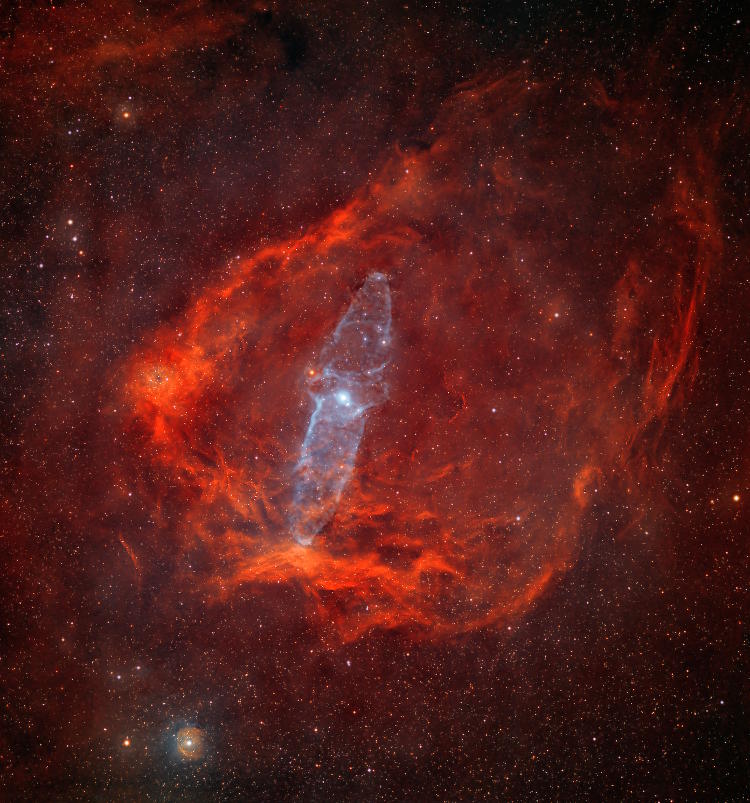
Or at least, it was for me.
This image has been sitting in my blog folder to feature even since I first happened across it, which was when it was posted to the Astronomy Picture of the Day back in October 2016 – I just never got around to doing the writeup for it. Which is a shame, because it represents this little “Aha!” moment, and I’m curious to know if others see it the same way. I’ll recap the basics here, but you’re encouraged to go the the original page for better details.
What you’re seeing here are two nebulae: Ou4 in blue, otherwise known as the Squid Nebula, and Sh2-129 in red, the Flying Bat Nebula. We have a tendency to see astronomy photos and, in our minds, consider such details as close together, the same distance from us, but nebulae are mostly transparent, often light reflected from vast gas or dust clouds, and so there’s no reason to assume that these have any proximity at all to each other – they could be light-years different in distance from us, and only seen along the same line of sight.
Nevertheless, our assumption in this case appears to be correct: these two nebulae really do lie the same distance from us, in close proximity and in fact intertwined – or at least, as near as we can presently tell. Which would mean that the bright spot in the center, a trio of powerful stars, is the source of the light that illuminates both of the nebulae, and Ou4 is likely gases and dust being blown off by that stellar wind.
And here’s where the optical ‘illusion’ (or sudden lack thereof) abruptly occurred for me. Because, as I absorbed this information, the red Sh2-129 nebula suddenly resolved into a large bowl or cave with Ou4 in the center, a massive cosmic geode – the shaping and depth of it just leapt to my eye and cannot be eradicated now. Do you see it?
Further, it’s likely not a cave, but a bubble instead, completely enclosing Ou4. We just don’t see the ‘wall’ between us and Ou4 because it’s illuminated from the opposite side, reflecting light back towards those stars and not in our direction. Which may mean that it would have been a lot brighter had it not occurred in the middle of the Flying Bat Nebula.
Anyway, I thought that moment of resolution, or whatever you want to call it, was kind of enlightening. The image itself was taken by Rolf Geissinger, undoubtedly with some long exposures and specific filtering to select very narrow wavelengths of the light being produced.




















































